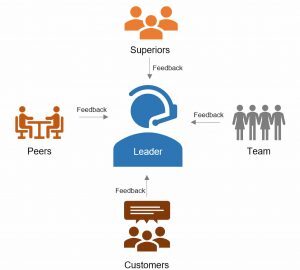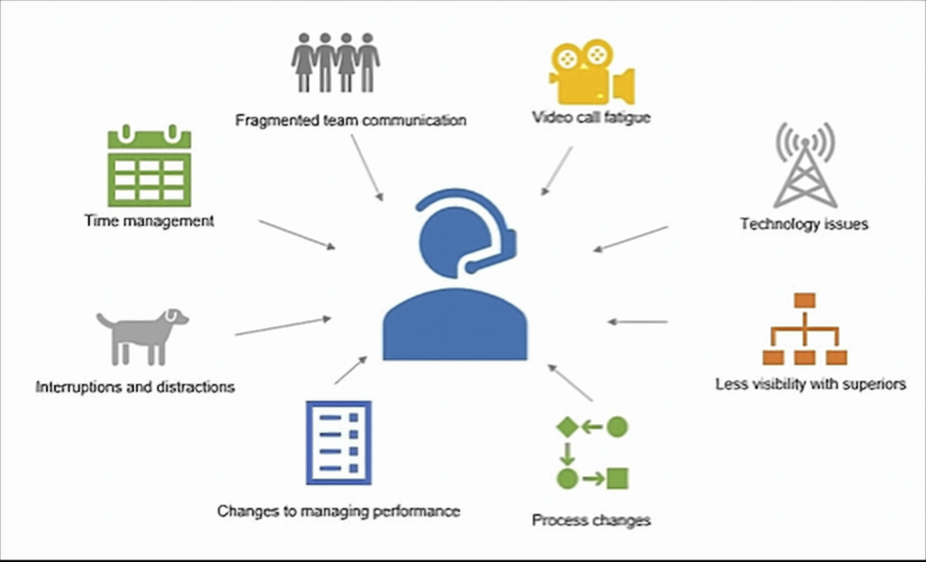How to Use 360-Degree Feedback with Remote Leaders
360-degree feedback model is a valuable tool in enhancing the leadership of any organization. It garners feedback from their peers, direct reports, and sometimes from their customers. In simple terms, it brings awareness to any leader, thereby initiating change in their behavior and leadership style. Leaders who gather and process feedback are more successful, work fewer hours, have less crises, and lead a happier and more productive team.

With the corporate world going mostly remote, all strategies, including coaching, had to adapt to this change more rapidly than planned. Managing a team remotely is new and more challenging. While some of the roles may go back to in-person working, a large part of the corporate world will likely stay hybrid if not remote. More than ever, this is a great time to utilize the 360-degree feedback as a tool to support your leaders in managing the remote workforce effectively.
Amidst many leadership tools, why use 360-degree feedback with remote leaders?
Let’s take a look at Jane. She is the Manager of a Service team in a large organization. Her team, which was once in-person, is now fully remote, including herself. Being a leader, she is equipped to handle day-to-day issues like absenteeism, late-coming, quality, and other performance issues. Additionally, she is now battling the challenge of not knowing how to coach her team remotely without coming across as a micro-manager.
Jane may likely have been a borderline micro-manager even before working remotely if you look into the issue. But that trait is now showing up more as she handles her team in an unfamiliar medium.
She is not alone. Leaders are facing multiple challenges when it comes to coaching and managing their teams remotely:

- Time management: Unclear distinction between work and personal time.
- Fragmented team communication: Unintegrated communication through multiple channels.
- Video-call fatigue: Overuse of video calls.
- Technology issues: Poor internet bandwidth, camera/microphone not working.
- Feeling less visible with their leaders: Feeling undervalued or left out.
- Changes and process workarounds: Updates to processes due to working remotely.
- Changes to managing performance: Unclear deliverables due to process changes.
- Interruptions and distractions: Managing kids, pets, relatives, neighbors, unexpected walk-ins amidst work.
More than ever, leaders today need support and tools to excel in their roles. Here are 5 benefits to administering a 360-degree feedback with remote leaders:
1. Knowing oneself better:
Think of a time when you were blindsided by feedback provided by your team on your leadership style. If not in that moment, you would have spent much time trying to understand how you had been unaware of it until that time. A 360-degree feedback will help alleviate it by helping every leader know more about themselves. Knowing oneself is the first step towards being a great leader.
2. Other’s perception:
Lee Atwater, a political consultant, said this a long time ago, “Perception is reality”. While this might not always be the case, it is usually true in the workplace. Knowing how your colleagues, peers, customers, and senior leaders look at someone is key to their success. Remote work has undoubtedly added a different flavor to everyone’s personality. A 360-degree evaluation will reveal traits that may need adjustment.
3. Adjusting the communication style:
Every leader invests time and efforts in honing their leadership skills, emphasizing building their communication skills. Communicating remotely is different than speaking in person. Leaders are comfortable communicating in-person as they read both verbal and non-verbal cues. Non-verbal communication constitutes 50% of the message, which is difficult to garner in the remote environment. Therefore, it is imperative for leaders to know how their team views their communication style and adjust as needed.
4. Knowing boundaries:
Professional boundaries exist whether we work in person or remotely. One of the well-known problems of remote working is overworking. With so many video calls, almost every leader now knows their team member’s families and their routines. There are pros and cons to it. It is great to build rapport with the team, but leaders have to constantly remind themselves that they cannot cross a certain boundary. These boundary’s were not an issue earlier as leaders only knew what their team members talked about their families at work. Leaders must now be acutely aware of their boundaries and triggers. It is pretty easy to unknowingly get drawn into the personal realm of a team member. This might lead to uncomfortable situations and potential lawsuits.
5. Creating a support system:
One of the common traits for many leaders is not asking for help. It takes conscious time and effort for leaders to understand their strengths and areas where they need help. Giving them the 360-degree insight will provide a faster pathway to grow in their role. They will then graduate to the next step of creating their support system.
In conclusion, a 360-degree feedback is an essential tool to support and accelerate the growth of every leader now more than any other time.
Related Resource: 360 Degree Feedback: Your Complete Guide
Related Blog Post: The Building Blocks of a successful 360 feedback survey in 2022


 Dr. Jaffee (M.A., Ph.D.) is a recognized expert in the field of assessments, and has created effective HR Solutions used by millions of people.
Dr. Jaffee (M.A., Ph.D.) is a recognized expert in the field of assessments, and has created effective HR Solutions used by millions of people.